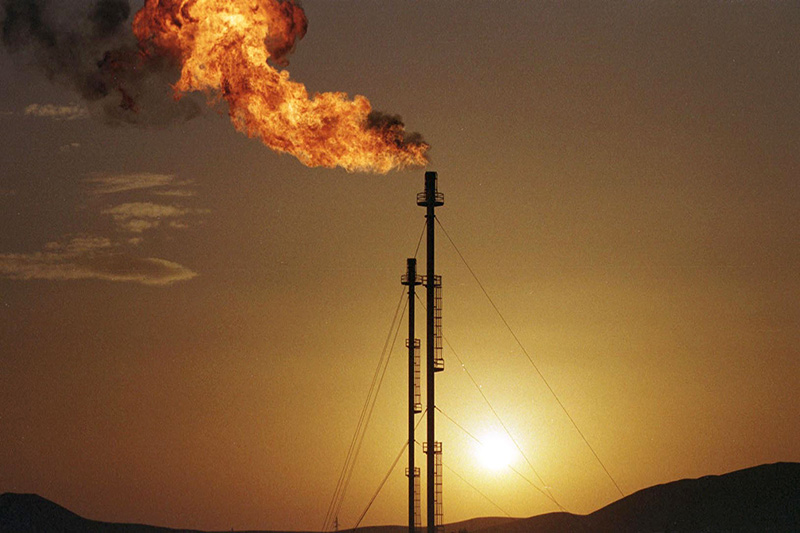Investing.com - Natural gas futures ended Friday’s session at the highest level since December 2011, as market players continued to monitor weather forecasts to gauge the strength of early-Autumn heating demand.
On the New York Mercantile Exchange, natural gas futures for delivery in November settled at USD3.587 per million British thermal units by close of trade Friday.
Earlier in the session, prices rose to a daily high of USD3.647 per million British thermal units, the strongest level since December 2, 2011.
On the week, front-month natural gas prices shed a modest 0.4%, the first weekly decline in four weeks.
Private forecasters WSI Energycast said Friday that cold weather was expected to descend across much of the U.S. over the next two weeks, potentially boosting early-Autumn heating demand.
The weather service provider said a "sizeable pattern shift" will lead to a sharp cooling across the eastern two-thirds of the U.S. in late-October and early-November.
Meanwhile, MDA EarthSat’s 11-to 15-day outlook issued Friday called for below normal temperatures across much of the eastern half of the nation during the period.
Bullish speculators are betting on the cooler weather potentially leading to some early-Autumn demand for the heating fuel.
Natural gas futures often reach a seasonal low in October, when mild weather reduces demand, before recovering in the winter, when heating-fuel use peaks.
Natural gas prices surged more than 3% Thursday after the U.S. Energy Information Administration said in its weekly supply report that natural gas storage in the U.S. rose by 51 billion cubic feet last week.
Last year, stocks rose by 106 billion cubic feet, while the average rise in the week over the previous five years was 71 billion cubic feet.
Total U.S. gas supplies stood at 3.776 trillion cubic feet, 5% above last year’s level and 7.1% above the five-year average for the week.
At the end of March, inventories were roughly 60% above the five-year average.
Early injection estimates for this week’s storage data range from 52 billion cubic feet to 77 billion cubic feet, compared to last year's build of 95 billion cubic feet. The five-year average change for the week is an increase of 65 billion cubic feet.
Despite recent gains, concerns remain that U.S. inventories will end the injection season above the record high of 3.852 trillion cubic feet, set last year.
The EIA projected earlier in the month that natural gas stocks are expected to hit a fresh record high of 3.903 trillion cubic feet on October 31.
Elsewhere in the energy complex, light sweet crude oil futures for December delivery settled at USD90.51 a barrel by close of trade on Friday, losing 1.7% on the week.
Heating oil for November delivery dropped 2.7% over the week to settle at USD3.132 per gallon by close of trade Friday.
On the New York Mercantile Exchange, natural gas futures for delivery in November settled at USD3.587 per million British thermal units by close of trade Friday.
Earlier in the session, prices rose to a daily high of USD3.647 per million British thermal units, the strongest level since December 2, 2011.
On the week, front-month natural gas prices shed a modest 0.4%, the first weekly decline in four weeks.
Private forecasters WSI Energycast said Friday that cold weather was expected to descend across much of the U.S. over the next two weeks, potentially boosting early-Autumn heating demand.
The weather service provider said a "sizeable pattern shift" will lead to a sharp cooling across the eastern two-thirds of the U.S. in late-October and early-November.
Meanwhile, MDA EarthSat’s 11-to 15-day outlook issued Friday called for below normal temperatures across much of the eastern half of the nation during the period.
Bullish speculators are betting on the cooler weather potentially leading to some early-Autumn demand for the heating fuel.
Natural gas futures often reach a seasonal low in October, when mild weather reduces demand, before recovering in the winter, when heating-fuel use peaks.
Natural gas prices surged more than 3% Thursday after the U.S. Energy Information Administration said in its weekly supply report that natural gas storage in the U.S. rose by 51 billion cubic feet last week.
Last year, stocks rose by 106 billion cubic feet, while the average rise in the week over the previous five years was 71 billion cubic feet.
Total U.S. gas supplies stood at 3.776 trillion cubic feet, 5% above last year’s level and 7.1% above the five-year average for the week.
At the end of March, inventories were roughly 60% above the five-year average.
Early injection estimates for this week’s storage data range from 52 billion cubic feet to 77 billion cubic feet, compared to last year's build of 95 billion cubic feet. The five-year average change for the week is an increase of 65 billion cubic feet.
Despite recent gains, concerns remain that U.S. inventories will end the injection season above the record high of 3.852 trillion cubic feet, set last year.
The EIA projected earlier in the month that natural gas stocks are expected to hit a fresh record high of 3.903 trillion cubic feet on October 31.
Elsewhere in the energy complex, light sweet crude oil futures for December delivery settled at USD90.51 a barrel by close of trade on Friday, losing 1.7% on the week.
Heating oil for November delivery dropped 2.7% over the week to settle at USD3.132 per gallon by close of trade Friday.
